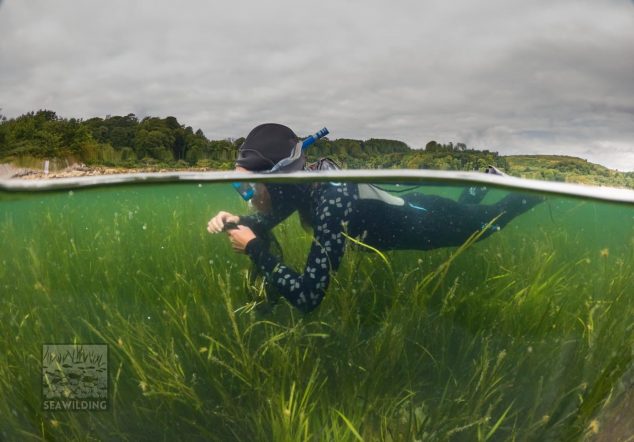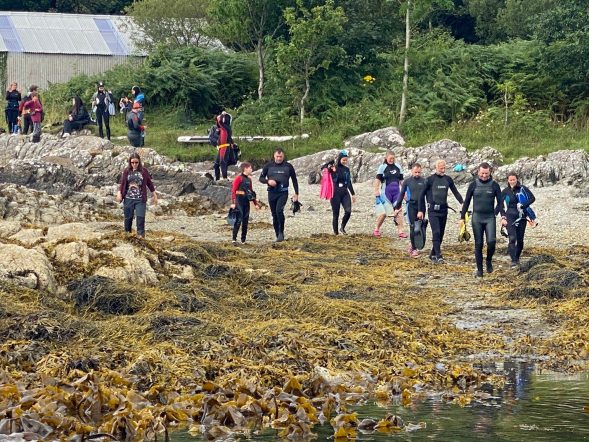
Community snorkelers and volunteers marked a milestone in Scottish inshore marine habitat restoration in mid-August by harvesting and planting seagrass in Loch Craignish. Over 60 snorkellers and volunteers from the Craignish peninsula, students from the Scottish Association for Marine Sciences (SAMS) and volunteers from across Scotland took part in the project which aims to create a new ¼ hectare meadow at Loch Craignish.
The Loch Craignish based charity, Seawilding, has partnered with Project Seagrass and the Scottish Association for Marine Science (SAMS) to deliver Scotland’s first community-led seagrass restoration project. Seawilding and members of the Craignish community are running it, while Project Seagrass provides technical oversight and SAMS, environmental monitoring and environmental DNA sampling.
Seagrass (Zostera marina) is a vital inshore marine habitat, which sequesters carbon faster than a rainforest and turns bare sand habitat into a structurally complex, productive ecosystem full of marine life. It’s also a key nursery ground for commercially important fish species such as cod, pollack, whiting and plaice, as well as herring and sea bass. Ninety-five per cent of seagrass meadows have disappeared around the UK coastline.
Loch Craignish
At Loch Craignish, there are ten small degraded meadows and the project, funded by Nature Scot’s Biodiversity Challenge Fund, aims to enhance the existing meadows this autumn, while trialling different restoration methodologies. If successful, the Seawilding team plan to roll out the methodology to other coastal community groups to help them restore seagrass in their local sea areas.
During the weekend, community volunteers learned about the incredible “eco-services” of seagrass, snorkeled through the seagrass meadows, harvested the seed by hand, processed it at Seawilding’s on-site facility and planted10,000 seeds in small hessian bags which give the germinating plants purchase on the seabed.
Seagrass Meadows
“It’s been a very exciting weekend and a real eye-opener for so many to get in the water and see for themselves the wonders of the seagrass meadows” said Danny Renton, Seawilding’s CEO.
“Community-led initiatives like these are a really important first step in our efforts to restore the health of the inshore marine environment which has been hammered by over-fishing, scallop dredging and bottom trawling, and pollution from aquaculture. It’s very empowering for community volunteers to get into the water and make an active difference to restore lost biodiversity. It’s onwards and upwards for us…”
Meanwhile Seawilding, is restoring 1 million native oysters to Loch Craignish over the next five years and has already introduced nearly 250,000. Native oysters were once common in many sea-lochs, but owing to human predation and pollution, they’re now very rare.
They filter and clean the water and form complex 3D reefs which become fish spawning and nursery grounds. By developing low-cost methodologies to help restore the degraded inshore marine environment, Seawilding is rolling its projects out to other coastal communities.
Find out more at www.seawilding.org

Tags: Argyll, Community, Restoration, Seagrass